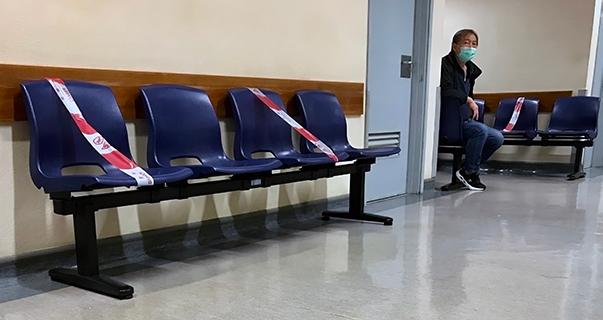The pandemic has raised new questions for health care facilities, suppliers, and manufacturers about the efficacy of adding antimicrobials to products to combat the health crisis. Health Care Without Harm’s 2016 report on antimicrobials in hospital furnishings concluded there is little evidence antimicrobials help to reduce health care-associated infections. In a new report, we examine the latest science about the virus, review current safety protocols, highlight potential risks from using antimicrobials, and offer recommendations.
Because of the pandemic, hospital purchasers may feel compelled to purchase antimicrobial products. However, Health Care Without Harm’s research found that many of these products are unproven to reduce infection and could have the unintended effect of increasing risk.
Main Resource
Considerations for purchasing decisions
- What are the reasons for considering this product?
- To reduce the transmission of the virus
- To provide reassurance to staff or patients
- Would these products add measurably to what you are already doing
- What are the potential risks are associated with this product?
- Exposure to nanoparticles or other antimicrobial technologies
- Impacts of antimicrobials released from products into the environment
- How will your cleaning protocols and materials affect the effectiveness of the product
- Effective antimicrobial surface technologies require direct contact of the virus or other microbe with the surface. If cleaning and disinfecting regimens become less frequent or rigorous because of a false sense of security that an antimicrobial surface may create, the effectiveness of the antimicrobial properties can be greatly diminished. Ongoing rigorous cleaning and disinfection programs are essential.
- Do you plan to use this product in the short term or over a long period of time?
- Products with antimicrobial properties should be studied not only for their initial impacts on the coronavirus but also for the durability of those impacts over time. This will often include regular cleaning and disinfecting. Antiviral properties may be lost from surfaces, resulting in diminished activity over days to weeks.
- Decisions about requesting antimicrobial properties in disposable products and materials that are needed immediately might understandably be based primarily on hope of efficacy rather than empirical data. But decisions about durable goods with much longer lifespans should be delayed until they can be based primarily on data.
Purchasing recommendations for health care
Because of the pandemic, health care purchasers, architects, and designers must make decisions with imperfect information about a highly transmissible viral disease.
In general, we recommend that health care purchasers avoid purchasing furniture, furnishings, or building products containing antimicrobial technologies and look for evidence of efficacy in a product before making a decision.
Evidence to look for
- In studies of efficacy on destroying coronavirus infectivity, what methods were used, and are they validated?
- What were the experimental conditions? How do they compare to real-world conditions of use?
- How long do the viricidal properties in this product last under conditions of use?
- What are the implications for proven cleaning and disinfection protocols?
- Are there potential adverse human and environmental health impacts of adding antimicrobial properties to this product throughout its lifespan?
Steps for health care purchasers
- Ask suppliers to disclose any antimicrobials added to materials and products, even if they are used for the purpose of material preservation, odor control, or some other aesthetic reason.
- Learn more about the efficacy and risks associated with adding antimicrobials to furnishings and how to choose safer alternatives.
- Examine antibiotic stewardship programs in your facility for opportunities to reduce the risk of generating antimicrobial resistance.
- Examine antibiotic stewardship programs in your community for opportunities to reduce the risk of generating antimicrobial resistance, including in animal agriculture.
- Help make the case that antibiotic stewardship to address the growing problem of antimicrobial resistance is a community-wide responsibility.
- The Clinician Champions in Comprehensive Antibiotic Stewardship (CCCAS) Collaborative offers guides on how to develop institutional policy and opportunities to take action.
To learn more about how to make informed purchasing decisions about less-toxic furnishings and other products, check out our sustainable procurement guide.
